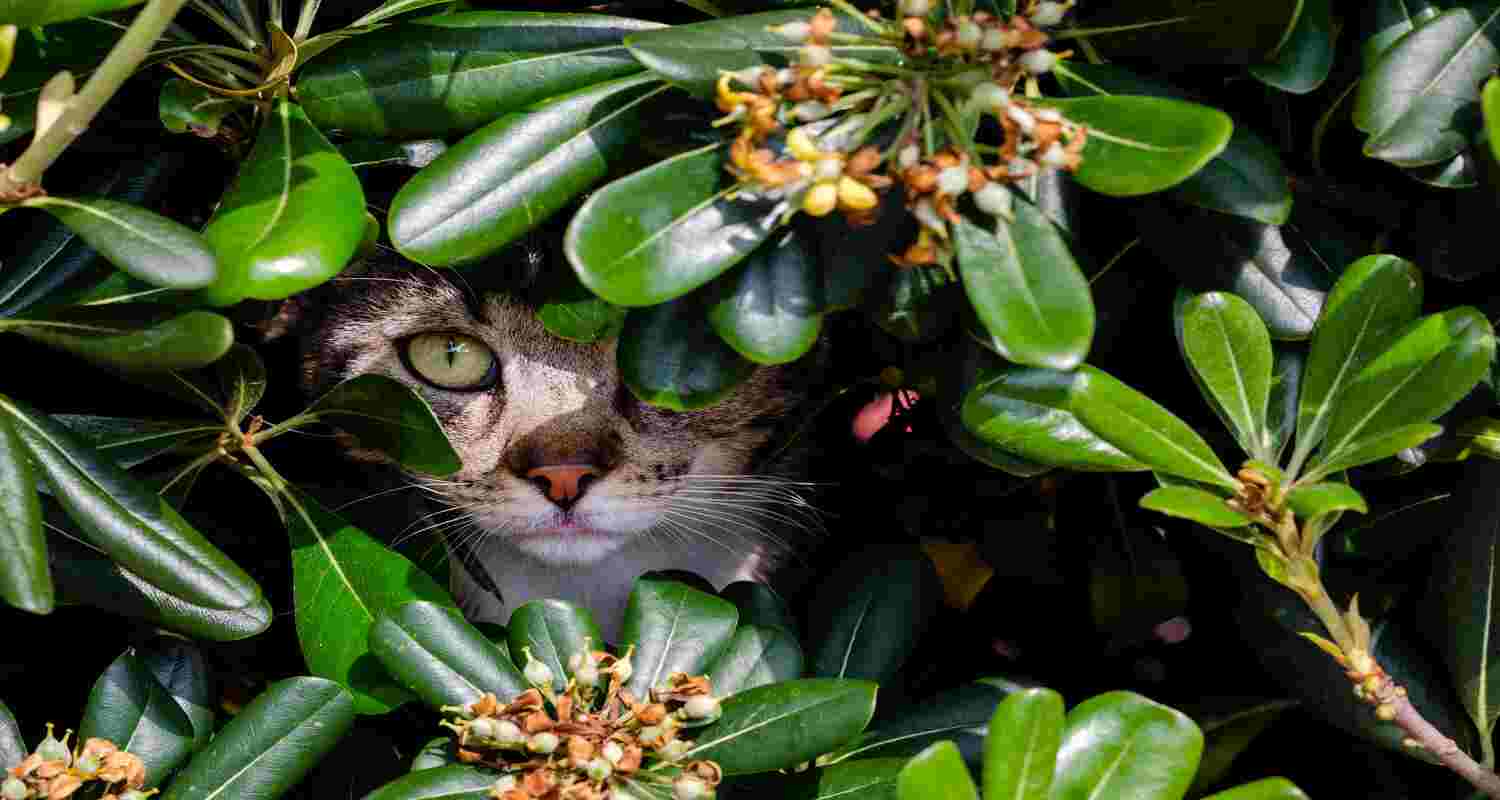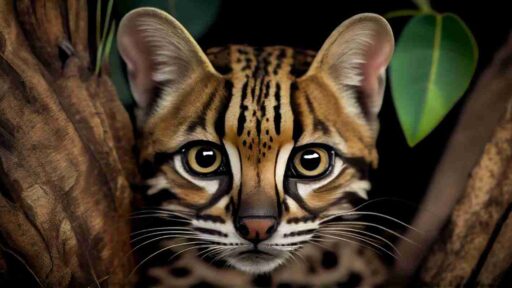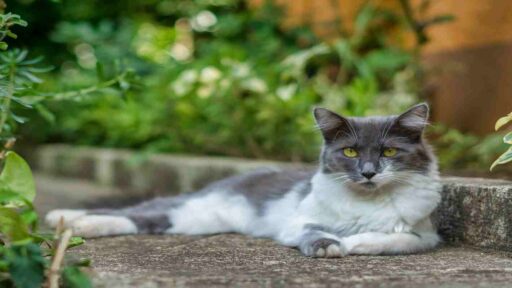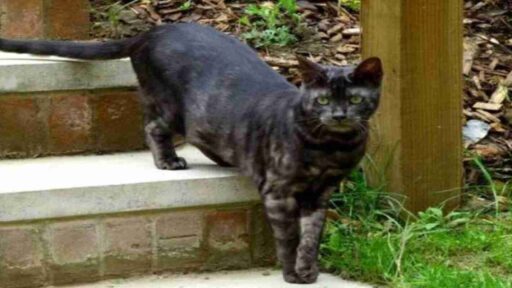What is A Rusty-Spotted Cat?
The Rusty-Spotted Cat, nature’s tiny marvel, captivates with its petite frame and distinctive rusty coat adorned with delicate spots. Found in the dense forests of South Asia, this elusive feline embodies grace and agility in its every move. Despite its diminutive size, its fierce demeanor and mesmerizing presence make it a true wonder of the wild, a miniature marvel that leaves a lasting impression on all who encounter it
Characteristics
The rusty-spotted cat is known for its petite size, being one of the smallest wild cat species in the world. It typically weighs between 2 to 3.5 pounds and measures about 14 to 19 inches in body length, with an additional 7 to 12 inches in tail length. Its fur is characterized by a rusty or reddish-brown coloration, adorned with distinctive dark spots that run along its body and tail. This elusive feline is native to South Asia and inhabits dense forests, displaying remarkable agility and stealth in navigating its environment. Despite its small stature, it possesses a fierce yet charming demeanor, emphasizing its role as a skilled predator in its habitat.
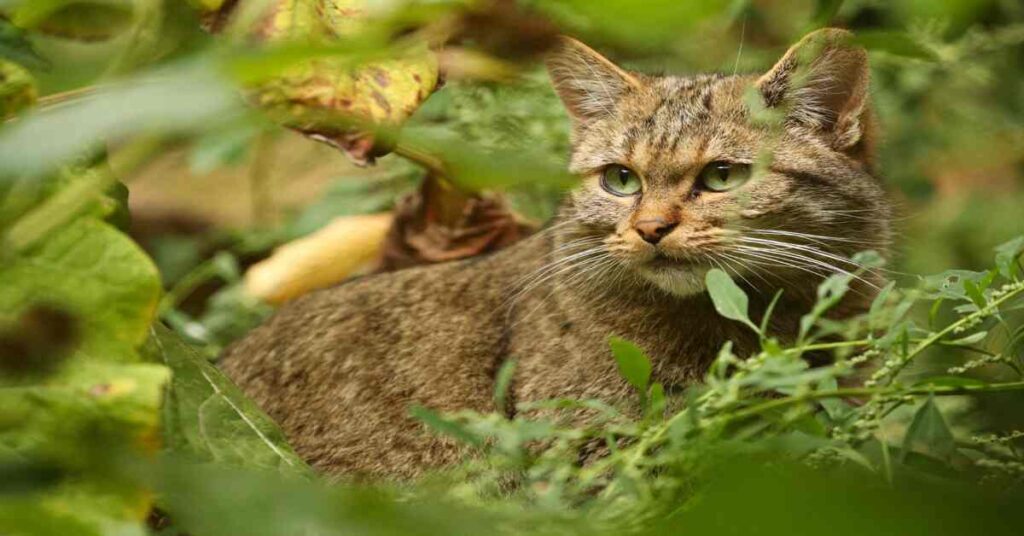
Origins
The Rusty-Spotted Cat’s origins trace back to the Indian subcontinent and Sri Lanka, where it thrives in a variety of habitats including dry deciduous forests, scrublands, and grasslands. These habitats provide the cat with ample cover to hunt and hide, showcasing its remarkable adaptation to diverse environments. Found at elevations ranging from sea level to around 7,800 feet, this cat’s ability to adapt to varying terrains and climates within its range demonstrates its resilience and flexibility in surviving across different landscapes in South Asia.
History
The historical documentation of the Rusty-Spotted Cat is limited due to its elusive nature and the remote habitats it inhabits. Records suggest that indigenous communities in South Asia have likely coexisted with this small wild cat for centuries, but formal scientific study and documentation began relatively recently.
In the 19th and 20th centuries, explorers and naturalists occasionally reported sightings of this species in the forests of India and Sri Lanka, contributing to early records of its existence. However, comprehensive studies and conservation efforts to protect and understand this species emerged more prominently in the late 20th and early 21st centuries.
Conservationists, wildlife researchers, and local communities have increasingly focused on studying and protecting the Rusty-Spotted Cat due to concerns about habitat loss, human encroachment, and potential threats to its survival. Ongoing research aims to uncover more about its behaviors, population dynamics, and ecological role in its natural habitat, providing valuable insights into this enigmatic and diminutive wild cat species.
Care
Caring for Rusty-Spotted Cats involves preserving their natural habitat and ensuring conservation efforts to protect this species. This includes safeguarding the diverse forest ecosystems in South Asia where they reside and addressing issues like habitat destruction, fragmentation, and human-wildlife conflicts.
Conservation initiatives often involve collaborations between governments, wildlife organizations, local communities, and researchers. These efforts aim to create protected areas, implement sustainable land management practices, and raise awareness about the importance of preserving biodiversity.
Additionally, studying these cats’ behaviors, population dynamics, and health is crucial for their conservation. Research helps identify specific threats, assess the cat’s needs, and develop effective conservation strategies to ensure their long-term survival in the wild.
Personality and Treatment
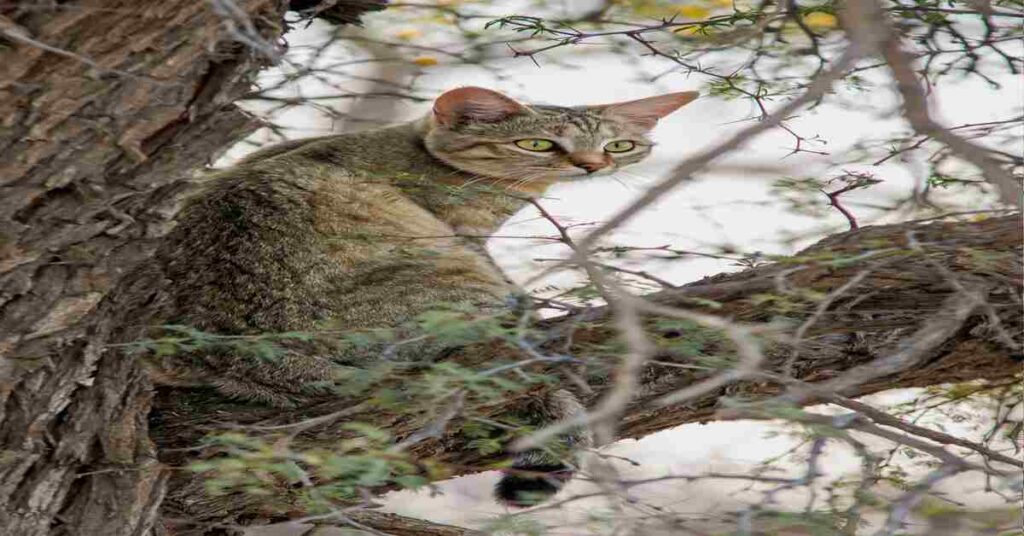
The Rusty-Spotted Cat, being a wild species, isn’t typically subjected to direct interaction or treatment by humans in the same way as domesticated animals. In conservation efforts, the focus is on preserving their natural habitat, monitoring their populations, and minimizing human impact on their environment.
When it comes to their personality, these cats are known for their elusive nature. They tend to avoid human contact and thrive best in their natural habitat, displaying behaviors essential for survival in the wild, such as hunting, territorial defense, and mating rituals.
Conservation efforts prioritize minimizing disturbance to their habitats and populations, allowing these cats to live and behave naturally without undue human interference. Human intervention is primarily focused on protecting and conserving their habitats rather than direct interaction with the cats themselves.
The Rusty-Spotted Cat Diet
The rusty-spotted cat is an adept hunter, primarily targeting small prey due to its small size. Its diet mainly consists of birds, particularly ground-dwelling species and smaller birds that are within its hunting capabilities. They also feed on various rodents like mice, rats, and squirrels, as well as insects and lizards found in their habitat.
Their role as an efficient predator of small animals contributes to the ecological balance within their ecosystem, as their small size allows them to access and hunt in narrow and dense areas where larger predators might struggle, and their dietary preferences often vary depending on the availability of prey within their habitat.
The Rusty-Spotted Cat Reproduction
Rusty-spotted cats reproduce through typical feline reproduction patterns. Breeding usually occurs during specific times of the year, often in response to environmental cues like changes in daylight or food availability.
Females reach sexual maturity at around one year of age, while males typically mature slightly later. When ready to mate, females attract males through vocalizations and scent markings. Mating is followed by a gestation period of approximately 66 to 70 days.
A typical litter consists of one to three kittens, born blind and helpless. The mother provides care and protection to her offspring in a den or secluded area, nursing them until they are old enough to begin consuming solid food. The kittens gradually develop their hunting skills through play and observation, becoming more independent as they grow.
Rusty-spotted cats exhibit maternal care, with the mother being the primary caregiver for the kittens until they become self-sufficient. This nurturing period plays a crucial role in the development of the young cats before they eventually venture out on their own.
FAQs
Can Rusty-Spotted Cats Be Pets?
Rusty-spotted cats, like other wild cat species, are not suitable or legal as pets in most places. They are wild animals with specific habitats and behavioral needs that cannot be met in a typical household environment. Additionally, keeping them as pets could pose risks to both the animal’s well-being and the safety of humans due to their natural wild instincts. As a result, they are not recommended or legally allowed to be kept as pets in many regions. Conservation efforts focus on protecting these cats in their natural habitats rather than domesticating them.
Is the Rusty-Spotted Cat Extinct?
As of my last update in January 2022, the rusty-spotted cat is not extinct. However, it is listed as “Near Threatened” on the IUCN Red List due to habitat loss, fragmentation, and potential threats from human activities. Conservation efforts aim to protect its habitat and ensure the survival of this species in the wild. It’s essential to continue monitoring and conserving their habitats to prevent their decline and potential extinction.
How Aggressive Are Rusty-Spotted Cats?
Rusty-spotted cats are generally not known to be aggressive toward humans. They tend to be shy and elusive, preferring to avoid human contact. However, as wild animals, they may display defensive behaviors if they feel threatened or cornered. Like most wild cats, they have natural instincts for self-preservation and may react defensively if they perceive a threat. In their natural habitat, they are more focused on hunting for small prey and maintaining their territory than interacting with humans.
Is the Rusty-Spotted Cat Big?
No, the rusty-spotted cat is not considered a big cat. It’s one of the smallest wild cat species in the world. It’s significantly smaller in size compared to big cats like lions, tigers, leopards, and jaguars. The rusty-spotted cat is known for its diminutive size, being closer in size to domestic cats, but it’s still a wild and distinct species.
Are Spotted Cats Friendly?
Spotted cats, like most wild animals, generally tend to be more wary and reserved around humans. This behavior is especially true for wild spotted cats such as the rusty-spotted cat, which are naturally shy and elusive. They aren’t domesticated animals and may not exhibit the same level of friendliness or social behavior that domestic cats do. Their instincts in the wild prioritize caution and self-preservation, so they might not display overtly friendly behaviors toward humans.
What Color is A Rusty Cat?
The rusty-spotted cat typically has a fur color described as a rusty or reddish-brown hue, which gives it its name. This coat coloration is often accompanied by dark spots that adorn its body, creating a distinct and striking appearance.
Can We Mix The Rusty-spotted Cat With Other Breeds?
The rusty-spotted cat is a distinct wild species, and it’s neither ethical nor practical to mix them with other breeds. Introducing wild species to domesticated breeds can have serious consequences for both the animals’ welfare and the preservation of the wild species. Furthermore, hybridization between wild and domesticated species can lead to genetic complications, behavioral issues, and health problems for the animals involved. It’s essential to respect the natural integrity of wild species and refrain from attempting to mix them with domestic breeds.
What are Some Interesting Facts About Rusty-Spotted Cats?
Rusty-spotted cats are fascinating creatures! Here are some intriguing facts about them:
- Tiny Felines: They are among the smallest wild cat species in the world, weighing just 2 to 3.5 pounds (1 to 1.6 kg) on average, with a body length of about 14 to 19 inches (35 to 48 cm).
- Elusive and Nocturnal: These cats are highly elusive and predominantly nocturnal, making them challenging to study in the wild. They are mostly active during the night, spending their days resting in hidden spots.
- Range and Habitat: Rusty-spotted cats are primarily found in India and Sri Lanka, inhabiting forests, grasslands, and scrublands. They are known to thrive in areas with dense vegetation.
- Skilled Predators: Despite their small size, they are skilled hunters, preying on birds, rodents, insects, and small reptiles. Their agility and adaptability allow them to navigate through dense vegetation in pursuit of prey.
- Distinctive Appearance: They have a unique appearance with rusty-red spots scattered across their coat, which varies from grayish-brown to buff in color. Their tail is relatively long compared to their body size.
- Solitary Behavior: Rusty-spotted cats are solitary creatures, usually only coming together during mating seasons. They establish and fiercely defend their territories from other cats.
- Conservation Concerns: They face threats from habitat loss due to human activities like deforestation and agricultural expansion. Additionally, they are sometimes hunted or captured for the illegal pet trade, posing a significant threat to their populations.

